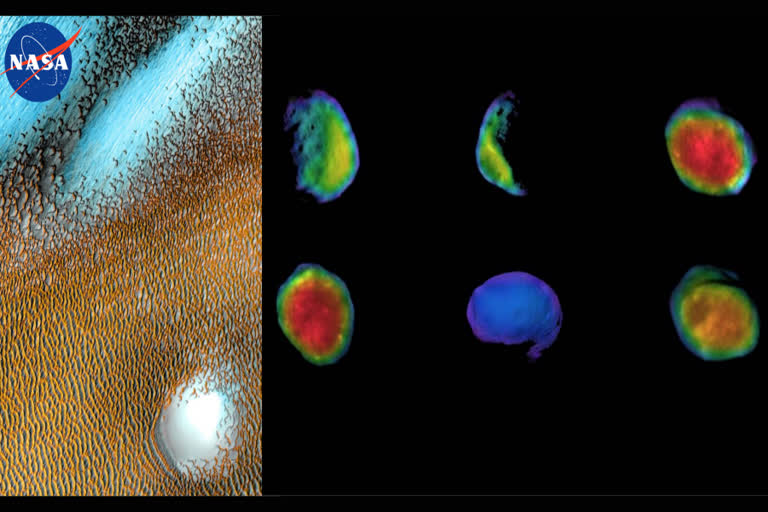Washington:Do you know that a NASA spacecraft launched 20 years ago is still working at the Red Planet?
For two decades, the longest-lived spacecraft at the Red Planet, 2001 Mars Odyssey, has helped locate water ice, assess landing sites, and study the planet's mysterious moons, NASA said.
Launched 20 years ago on April 7, the orbiter, which takes its name from Arthur C. Clarke's classic sci-fi novel "2001: A Space Odyssey", was sent to map the composition of the Martian surface, providing a window to the past so scientists could piece together how the planet evolved.
But it has done far more than that, uncovering troves of water ice, serving as a crucial communications link for other spacecraft, and helping to pave the way not just for safer landings but also future astronauts.
Odyssey's two decades of data have been a boon for researchers working to determine where water ice is locked up on the planet.
"Before Odyssey, we didn't know where this water was stored on the planet," Project Scientist Jeffrey Plaut of NASA's Jet Propulsion Laboratory in Southern California, which leads the Odyssey mission, said in a statement.
"We detected it for the first time from orbit and later confirmed it was there using the Phoenix lander."
The orbiter finds the water ice using its gamma-ray spectrometer (GRS) detector, which has proven to be a capable hunter of near-surface hydrogen -- a proxy for water ice.
The GRS measures the amount of different elements on the Martian surface and also serves as a node in NASA's interplanetary gamma-ray burst (GRB) detection network, which identifies source locations of GRB's for follow-up astronomical observations.
For many years, the most complete global maps of Mars were made using Odyssey's infrared camera, called the Thermal Emission Imaging System, or THEMIS.
The camera measures the surface temperature day and night, allowing scientists to determine what physical materials, such as rock, sand, or dust, exist.
Its data reveals the presence of these materials based on how they heat up or cool down over the course of a Martian day.
What is the net effect of two decades' worth of all that mapping?
Scientists have not just used the data to map valley networks and craters, they have also been able to spot sandstone, iron-rich rocks, salts, and more -- findings that help lend deeper insight to Mars' story.
